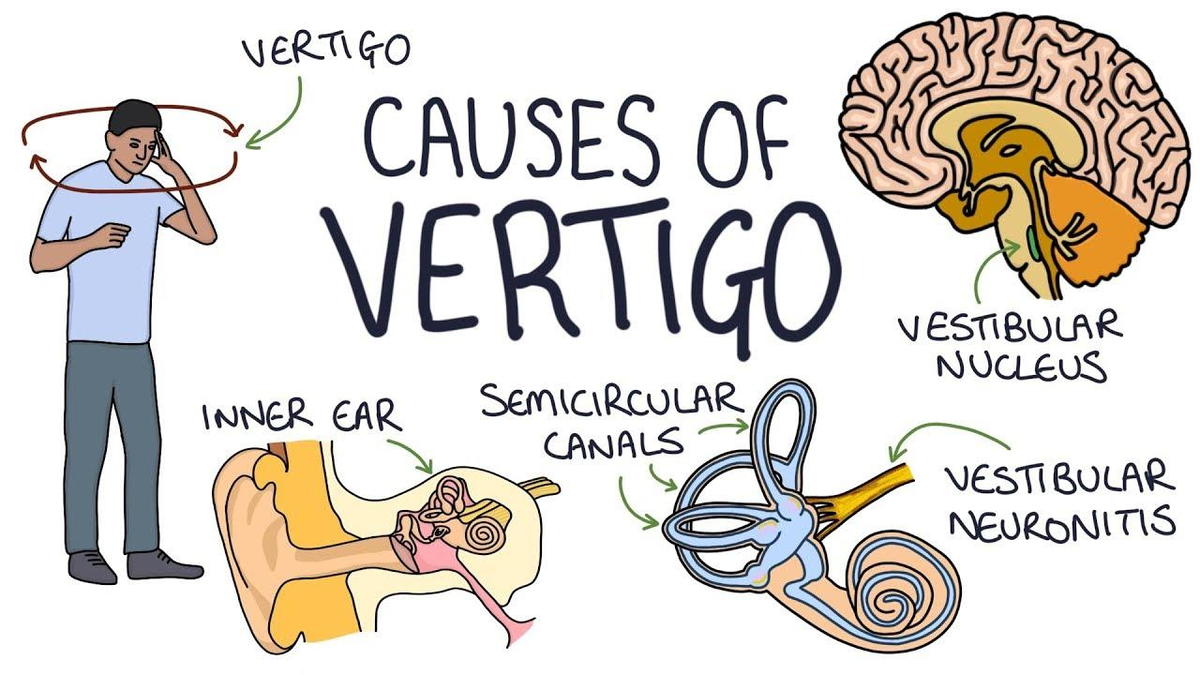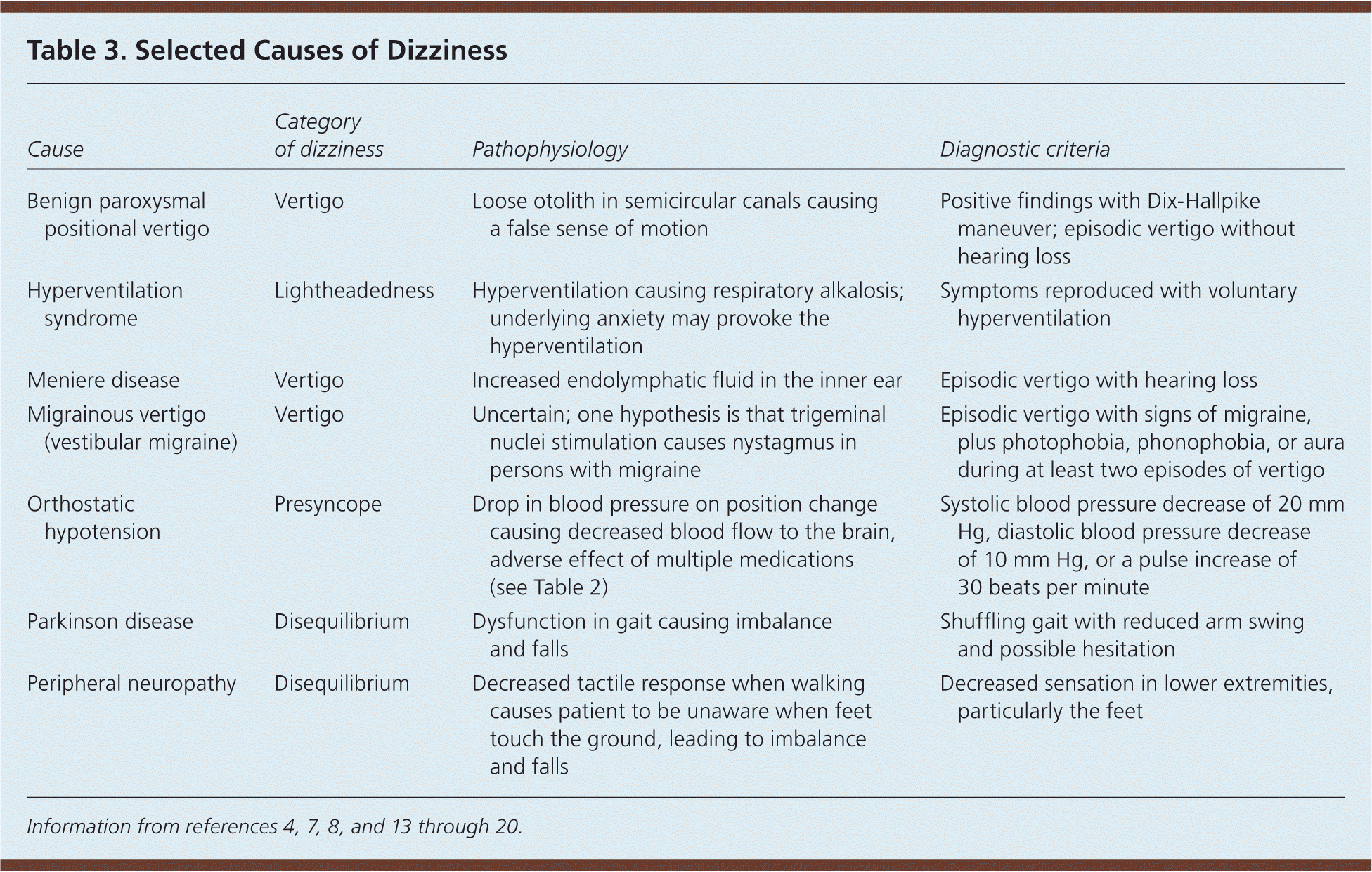Vertigo and dizziness are common symptoms that can significantly impact a person’s quality of life. Understanding the causes of these conditions is crucial for proper diagnosis and effective treatment. This article provides a comprehensive overview of vertigo dizziness causes, discussing the different types, symptoms, and potential underlying medical conditions.
Vertigo is a sensation of spinning or whirling, while dizziness refers to a feeling of lightheadedness or unsteadiness. These symptoms can arise from various causes, ranging from inner ear disorders to neurological conditions.
Vertigo and Dizziness Causes
Vertigo and dizziness are common symptoms that can be caused by a variety of underlying medical conditions. It is important to understand the different types of vertigo and dizziness, as well as the potential causes, in order to receive the proper diagnosis and treatment.
paragraphVertigo is a sensation of spinning or movement that is often accompanied by nausea, vomiting, and sweating. Dizziness, on the other hand, is a feeling of lightheadedness or unsteadiness that can make it difficult to walk or stand.
Peripheral Causes
- Benign paroxysmal positional vertigo (BPPV) is a common cause of vertigo that is caused by a problem in the inner ear.
- Meniere’s disease is a condition that affects the inner ear and can cause vertigo, hearing loss, and tinnitus.
- Vestibular neuritis is an inflammation of the vestibular nerve, which can cause vertigo and hearing loss.
Central Causes
- Stroke is a serious medical condition that can cause vertigo, dizziness, and other neurological symptoms.
- Multiple sclerosis is a chronic neurological condition that can cause vertigo, dizziness, and other symptoms.
- Brain tumors can also cause vertigo and dizziness, especially if they are located in the cerebellum or brainstem.
Peripheral Vertigo: Vertigo Dizziness Causes
Peripheral vertigo is a type of vertigo that arises from the inner ear or vestibular nerve. It is the most common type of vertigo.
The inner ear contains fluid-filled canals that help us maintain our balance. When these canals are damaged or irritated, it can cause vertigo. The vestibular nerve sends signals from the inner ear to the brain about our head and body movements.
Dizziness caused by vertigo can have various causes. If you’re looking for relief, exploring what medicine is good for vertigo can help you make informed choices. By understanding the potential causes and available treatments, you can take steps towards managing your vertigo symptoms effectively.
If this nerve is damaged, it can also cause vertigo.
Causes of Peripheral Vertigo, Vertigo dizziness causes
- Inner ear disorders:These can include labyrinthitis, Meniere’s disease, and vestibular neuritis.
- Vestibular nerve problems:These can include vestibular schwannoma, a benign tumor that grows on the vestibular nerve, and vestibular neuronitis, an inflammation of the vestibular nerve.
Symptoms of Peripheral Vertigo
The symptoms of peripheral vertigo can vary depending on the underlying cause, but they typically include:
- Spinning sensations
- Nausea
- Vomiting
- Balance problems
- Hearing loss
- Tinnitus
Peripheral vertigo can be a very distressing condition, but it is usually treatable. Treatment will depend on the underlying cause.
| Cause | Symptoms |
|---|---|
| Labyrinthitis | Spinning sensations, nausea, vomiting, hearing loss, tinnitus |
| Meniere’s disease | Episodes of vertigo, hearing loss, tinnitus, and a feeling of fullness in the ear |
| Vestibular neuritis | Sudden onset of vertigo, nausea, and vomiting |
| Vestibular schwannoma | Gradual onset of hearing loss, tinnitus, and vertigo |
| Vestibular neuronitis | Sudden onset of vertigo, nausea, and vomiting |
Central Vertigo

Central vertigo, unlike peripheral vertigo, originates from issues within the central nervous system, specifically the brain stem and cerebellum.
The brain stem controls balance and eye movements, while the cerebellum coordinates movement and posture. Disorders affecting these areas can lead to central vertigo.
Causes of Central Vertigo
- Brain stem stroke or hemorrhage
- Multiple sclerosis
- Parkinson’s disease
- Brain tumors
- Meningitis or encephalitis
- Cervical spine disorders (e.g., whiplash)
Symptoms of Central Vertigo
Central vertigo often presents with symptoms that differ from peripheral vertigo, such as:
- Imbalance and difficulty walking
- Double vision or blurred vision
- Nystagmus (involuntary eye movements)
- Speech difficulties
- Numbness or weakness on one side of the body
Comparison of Peripheral and Central Vertigo
| Characteristic | Peripheral Vertigo | Central Vertigo |
|---|---|---|
| Cause | Inner ear disorders | Brain stem or cerebellar disorders |
| Symptoms | Spinning sensation, nausea, vomiting | Imbalance, double vision, speech difficulties |
| Associated hearing loss | Common | Rare |
| Head movements | Triggers vertigo | May not trigger vertigo |
| Nystagmus | Horizontal or rotational | Vertical or multidirectional |
Other Causes of Vertigo and Dizziness

Vertigo and dizziness can also be caused by a variety of other factors, including medications, infections, and anxiety disorders. It is important to undergo medical evaluation to determine the underlying cause of your symptoms, as treatment will vary depending on the specific diagnosis.
Medications
- Antibiotics (such as streptomycin and gentamicin)
- Anticonvulsants (such as phenytoin and carbamazepine)
- Antidepressants (such as amitriptyline and sertraline)
- Diuretics (such as furosemide and hydrochlorothiazide)
- NSAIDs (such as ibuprofen and naproxen)
- Sedatives (such as benzodiazepines and barbiturates)
Infections
- Bacterial infections (such as meningitis and labyrinthitis)
- Viral infections (such as the flu and common cold)
- Fungal infections (such as aspergillosis and candidiasis)
Anxiety Disorders
- Panic disorder
- Generalized anxiety disorder
- Social anxiety disorder
Differential Diagnosis of Vertigo and Dizziness
Differential diagnosis is a crucial step in determining the specific cause of vertigo and dizziness. It involves a systematic approach to rule out potential underlying conditions.
The differential diagnosis process begins with a thorough medical history and physical examination. The healthcare provider will inquire about symptoms, such as the duration, severity, and triggers of vertigo or dizziness. They will also perform a physical examination to assess balance, coordination, and neurological function.
Diagnostic Tests
Based on the initial evaluation, the healthcare provider may order additional diagnostic tests to further investigate the cause of vertigo and dizziness. These tests may include:
- Balance testing:This test evaluates balance and coordination through a series of maneuvers, such as the Romberg test and Dix-Hallpike maneuver.
- Imaging studies:Imaging studies, such as MRI or CT scans, can visualize the brain and inner ear to detect abnormalities or lesions that may contribute to vertigo and dizziness.
- Electroencephalography (EEG):EEG measures electrical activity in the brain and can help identify seizure activity or other neurological disorders that may cause dizziness.
- Vestibular evoked myogenic potential (VEMP) testing:VEMP testing assesses the function of the vestibular system, which is responsible for balance and spatial orientation.
- Blood tests:Blood tests can check for underlying medical conditions, such as anemia, thyroid disorders, or electrolyte imbalances, that may contribute to vertigo and dizziness.
Differential Diagnosis Table
The following table summarizes the differential diagnosis process for vertigo and dizziness:
| Symptom | Possible Causes |
|---|---|
| Peripheral Vertigo | Benign paroxysmal positional vertigo (BPPV)Vestibular neuritisMénière’s disease |
| Central Vertigo | StrokeBrain tumorMultiple sclerosisCervical spine disorders |
| Other Causes | MigraineAnxiety disordersMedication side effectsElectrolyte imbalances |
Treatment Options for Vertigo and Dizziness
Managing vertigo and dizziness effectively involves addressing the underlying cause. Treatment options vary depending on the specific diagnosis.
Medications
Medications can help alleviate symptoms of vertigo and dizziness. These include:
- Anti-nausea drugs (e.g., meclizine, dimenhydrinate) to reduce nausea and vomiting.
- Anticholinergics (e.g., scopolamine) to block acetylcholine, a neurotransmitter that can worsen symptoms.
- Vestibular suppressants (e.g., benzodiazepines) to reduce dizziness and vertigo.
Physical Therapy
Physical therapy exercises can improve balance and reduce dizziness. These include:
- Vestibular rehabilitation exercises (e.g., head movements, balance exercises) to strengthen the vestibular system.
- Neck exercises to reduce neck muscle tension that can contribute to dizziness.
Lifestyle Modifications
Lifestyle modifications can also help manage vertigo and dizziness:
- Avoid triggers that worsen symptoms (e.g., caffeine, alcohol, bright lights).
- Get adequate sleep and avoid overexertion.
- Use a cane or walker for stability if needed.
Treatment Options for Different Types of Vertigo and Dizziness
| Type of Vertigo | Treatment Options |
|---|---|
| Benign paroxysmal positional vertigo (BPPV) | Epley maneuver (head repositioning exercises) |
| Meniere’s disease | Medications, diet modifications, surgery |
| Vestibular neuritis | Medications, physical therapy |
| Central vertigo | Medications, physical therapy, lifestyle modifications |
Final Summary
In conclusion, vertigo and dizziness can result from a wide range of underlying medical conditions. Proper diagnosis and treatment are essential to manage symptoms and improve quality of life. If you experience persistent or severe vertigo or dizziness, it is crucial to seek medical evaluation to determine the underlying cause and receive appropriate treatment.
